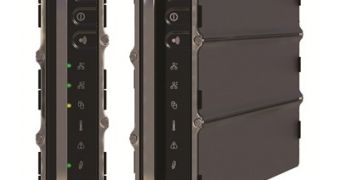Boston's Hardcore LSS 200 doesn't look all that groundbreaking on the outside, as far as server blades go, but knowing what the insides hold will leave people somewhere between surprise and awe.
Long story short, the Hardcore LSS 200 server, whose product page is located here, uses mineral oil for the cooling instead of air or water.
A plumbing system pulls in cool oil into each blade and then extracts the hot one through a pipeline system.
Once the oil goes through an external cooling installation (outside of the building), it resumes the cycle, again and again.
The technology was developed by Liquid Blade, not Boston, but the latter is the one who managed to put it to use.
According to the company, energy consumption is lowered by 80% compared to air-cooled server rooms, and costs are lowered as well, by 40%.
What's more, since the individual server blades don't need to be spaced apart like in common arrays, companies can make do with less room, or just build better and more capacious servers in the same space as regular systems.
Of course, this technology would be wasted on just any product, so Boston gave the Hardcore LSS 200 two Xeon 5600 processors and up to 192 GB of RAM (random access memory).
36 lanes of PCI Express 2.0 I/O exist as well, plus Intel VT-c and Intel VT-d enhancements (for virtualization OS), Intel Dynamic Power Node Manager and support for Intel ICH10, ICH10R and Intel 6700pxh 64-bit PCI hub.
It isn't quite on the same level as products powered by Intel's newest chips, the Xeon E5 series, but, then again, Boston probably plans to eventually use that platform too.
The newcomer will probably be most popular in countries where the atmosphere is naturally hot and/or humid, leading to higher risks when chilling circuits and chips with just air.

 14 DAY TRIAL //
14 DAY TRIAL // 